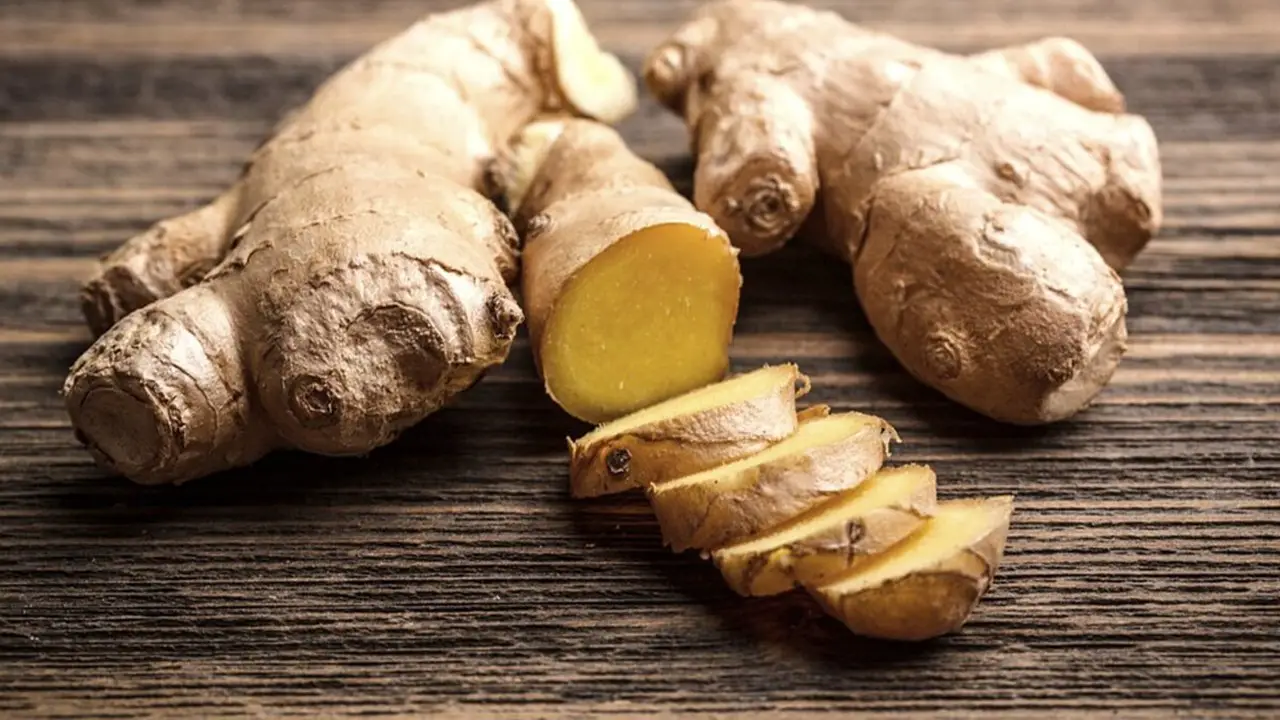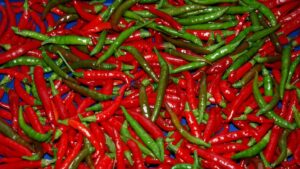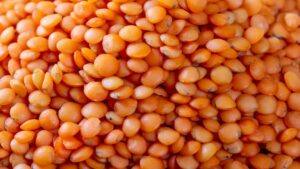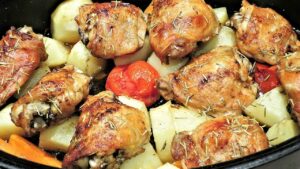Indians love the pungent flavour of ginger. Do you know it is the root of a plant of South Asian origin? The plant produces yellow flowers that have incredible aesthetic value.
From chai to chutney, ginger finds versatile uses in many Indian cuisines. Ginger-garlic paste does a flavoursome and awesome duet in many Indian dishes, especially meat recipes.
However, it is never to suggest that ginger is nothing without its overpowering aromatic partner garlic. Even when used alone, it rocks in many dishes.
Ginger is dense with nutritional benefits. It stimulates secretion of saliva, which makes it easier to swallow foods. India is the world’s leading producer of ginger.
What is Ginger (Adrak)?

Ginger or Adrak is a root of a flowering plant native to South Asia that has a strong, pungent flavor and aroma.
It is widely used in various cuisines around the world, particularly in Asian and Indian cuisine.
Ginger is also known for its nutritional benefits and has been used for its medicinal properties for centuries.
It is commonly used as a spice, flavoring agent, and ingredient in drinks, desserts, and baked goods.
Uses of Ginger in Indian Cuisines
In both Bengali and non-Bengali foods, ginger finds similar kinds of uses. Therefore, there are not many differences, at least any big ones, when it comes to uses of ginger in Bengali and other Indian cuisines.
“Ektu ada cha habe?” or “Thora adrak wali chai ho jaye (get a cup of ginger tea)?” The question is the same but in different languages – Bengali and Hindi.
Native speakers in other Indian languages ask the same question. What does it establish? It is beyond doubt that ginger-tea is a pan-India favourite.
Craving reaches the level of insanity when it is raining, drizzling, snowing or just any evening without events.
It is almost like a medicine if you have a fever or cough. Add mint leaves and basil leaves for extra punches.
The pungent flavour of ginger makes a cup of steaming tea delicious beyond words. To up the flavour, add a mix of whole spices such as cinnamon, cardamom, cloves and pepper. Bursts of talks with ginger tea and snacks – what makes an evening better than this?
Ginger toppings on salads – it looks teasing and tasty. Avoid overdoing it; just a few sprinkles are enough for a palate-tickling presentation.
Ginger and garlic paste! Despite all the differences in shapes and sharpness, they make a perfect aromatic pair.
Ginger is pungent whereas garlic is spicy. They are hands-in-gloves with each in many spicy dishes, especially the non-veg ones.
The duo brings a great essence to rich and royal traditional cuisines. The paste is added to thicken curries as well. When used in everyday curries, the duo whips up a better flavour.
Often paired with onion paste, tomato and green chillies, they do a full and flavourful justice to your pampered taste buds.
Want to cook restaurant-style kadai paneer? The gravy is thickened with ginger paste and flavoured with some common spices. Top the dish with a few julienne-cut ginger pieces to make it high on pungency.
Aloo-methi sabji the Punjabi style – what do you think about it? Easy, awesome, isn’t it?
With every spoonful of this dry sabji, you get a wonderful melange of flavours – pungency of ginger, softness of potato and bitterness of fenugreek.
Each retains their charm yet makes an awesome combination – that’s the best-kept secret of this recipe.
Ginger is a common ingredient for many comforting, healthy drinks such as, mango-ginger sorbet, ginger-lemon drink, Mumbai-style ganna (sugarcane) ke ras, lychee ginger dosti, ginger watermelon juice and there are so many.
Have you heard of ginger milk? It is good for cough and cold.
Ginger makes a very special appearance in many types of Indian chutneys. Most of these palate-cleansing dishes offer a sharp and spicy flavour, sometimes married to sweetness.
Whether it is coconut chutney accompanying masala dosa, green chutney to serve with fried snacks or just plain tomato chutney, ginger adds distinct sharpness and spiciness.
How can we forget ginger pickle? A spoonful of pickle with fried snacks – that’s it, that’s enough.
How Does Ginger Taste?
Ginger has a distinct and strong flavor that is difficult to describe, but it is often described as slightly sweet, spicy, and pungent.
It has a warm and woody aroma that is both refreshing and earthy.
The taste of ginger can vary depending on how it’s prepared and used.
When fresh ginger is grated or chopped, it has a sharper and more pungent taste than dried or powdered ginger.
Ginger can also be pickled, which gives it a tangy and sour taste.
Overall, ginger is a versatile spice that can add a unique and complex flavor to both sweet and savory dishes.
It is commonly used in Asian and Indian cuisine, as well as in baked goods, drinks, and desserts.
What Foods Go Well with Ginger?
Ginger is a versatile spice that pairs well with a wide range of foods, both sweet and savory. Here are some examples of foods that go well with ginger:
Asian cuisine: Ginger is a staple in many Asian cuisines, such as Chinese, Japanese, and Thai. It pairs well with ingredients like soy sauce, sesame oil, garlic, and scallions in stir-fries, noodles, and soups.
Meat dishes: Ginger complements the flavors of meats such as beef, chicken, pork, and fish. It can be used in marinades, glazes, and sauces to add flavor and tenderize meat.
Vegetables: Ginger adds a fresh and spicy flavor to vegetables, such as broccoli, carrots, and sweet potatoes. It can be used in stir-fries or roasted with olive oil and a pinch of salt.
Baked goods: Ginger is a popular spice in baked goods, such as gingerbread, cookies, and cakes. It pairs well with other warm spices like cinnamon and nutmeg.
Beverages: Ginger can add a spicy kick to hot tea, iced tea, lemonade, and cocktails. It can be used to make homemade ginger ale or added to smoothies for a refreshing twist.
Overall, ginger is a versatile spice that can add flavor and depth to a wide variety of foods. Experiment with different combinations to discover your favorite ways to use ginger in your cooking.
What Spices Go Good with Ginger?
Ginger pairs well with many spices, and the combination of spices can enhance the flavor of ginger and make it a more complex and flavorful addition to dishes. Here are some spices that go well with ginger:
Cinnamon: Cinnamon and ginger are a classic spice pairing, often used together in baked goods like gingerbread and pumpkin pie. Cinnamon adds a sweet and warm flavor that complements the spiciness of ginger.
Nutmeg: Nutmeg has a warm and nutty flavor that pairs well with ginger in baked goods, desserts, and hot beverages like chai tea.
Cardamom: Cardamom is a warm and aromatic spice that is commonly used in Indian and Middle Eastern cuisine. It pairs well with ginger in curries, soups, and rice dishes.
Cloves: Cloves have a strong and sweet flavor that pairs well with ginger in baked goods and beverages. They are often used together in spiced cider and mulled wine.
Turmeric: Turmeric and ginger both have anti-inflammatory properties and complement each other well in curries and other savory dishes. Turmeric adds a slightly bitter and earthy flavor to the spice blend.
Overall, there are many spices that pair well with ginger, and the combination of spices can vary depending on the intended use and personal preference.
Experiment with different spice blends to discover your favorite flavor combinations.
How Do You Prepare Ginger Root for Cooking?
To prepare ginger root for cooking, follow these steps:
Choose fresh ginger: Look for ginger roots that are firm, smooth, and free of wrinkles or blemishes. The skin should be thin and brownish, with a slight sheen.
Peel the ginger: Using a vegetable peeler or a spoon, gently remove the skin from the ginger root. You can also use a paring knife to remove any knobby bits or bumps.
Slice or grate the ginger: Depending on the recipe, you can slice the ginger into thin rounds, julienne it into matchsticks, or grate it using a fine grater or a Microplane. Slicing or grating the ginger will release more of its flavor and aroma than leaving it whole.
Add the ginger to the recipe: Once the ginger is prepped, you can add it to the recipe. It can be sautéed with garlic and other aromatics, added to marinades and sauces, or steeped in hot water to make ginger tea.
Note: Fresh ginger can have a strong and spicy flavor, so start with a small amount and adjust to taste. You can also store fresh ginger in the refrigerator for up to three weeks, or in the freezer for up to six months.
How Do You Make Ginger Taste Better?
Ginger has a unique and spicy flavor that some people find overwhelming or too intense.
However, there are several ways to make ginger taste better and more palatable, while still enjoying its health benefits. Here are some tips:
Use it in moderation: Ginger has a strong and spicy flavor, so start with a small amount and gradually increase it to your desired taste.
Pair it with other flavors: Ginger pairs well with other warm spices like cinnamon, nutmeg, and cardamom, as well as sweet flavors like honey and maple syrup. You can also add ginger to recipes that include garlic, onion, and soy sauce.
Cook it in different ways: Ginger can be used raw or cooked, and the way you prepare it can affect its flavor. Raw ginger has a more pungent flavor, while cooked ginger can be milder and sweeter. Try grating or slicing ginger and adding it to stir-fries, soups, and marinades.
Infuse it in beverages: Ginger can be infused in hot water or tea to make a soothing and aromatic beverage. You can also add ginger to smoothies or juice for a refreshing and healthy drink.
Choose the right type of ginger: Different types of ginger can have slightly different flavors. Young ginger, also known as baby ginger, is less fibrous and has a milder flavor than mature ginger. You can also try different varieties of ginger, such as galangal or turmeric, for a different flavor profile.
Overall, there are many ways to make ginger taste better and more enjoyable, while still getting the health benefits of this versatile spice.
Experiment with different flavors and preparation methods to find your favorite way to use ginger in your cooking.
Questions & Answers
Can You Cook Raw Gingers?
Yes, small pieces of ginger are sometimes added at the start of cooking. However, most of the time, it is added at the end of cooking to retain the flavour. Ginger paste is always added at the beginning.
Is Cooked Ginger Better Than RAW?
Both raw and cooked ginger can be healthy and delicious, and the choice between the two depends on personal preference and the intended use. It's important to include ginger in your diet in a way that you enjoy, to get the most out of its health benefits.
Can You Sprinkle Ginger on Your Food?
Ginger is sprinkled on many rich veg and non-veg dishes for extra punch of pungency.
Do You Need to Peel Ginger?
Not always. Young, fresh ginger has soft skin and so, you can cook them without peeling. Gingers that we buy from the grocery stores have papery skin and therefore, need peeling.
What is Ginger Called in Different Languages?
Ginger is called ada in Bengali and Oriya, adrak in Hindi and Punjabi, allam / allamu / sonthi in Telugu, inji in Malayalam, inci in Tamil, shunti / alla / ashi Shunti / ardraka in Kannada, aadu in Gujrati, alley in Konkani, Aale in Marathi.
Conclusion
Ginger is a popular and versatile spice in Indian cuisine and is used in a variety of dishes, from tea and chutneys to curries and desserts.
Ginger is also known for its nutritional benefits and its ability to add a unique and complex flavor to both sweet and savory dishes.
It pairs well with a range of foods, including Asian cuisine, meat dishes, vegetables, and baked goods.







